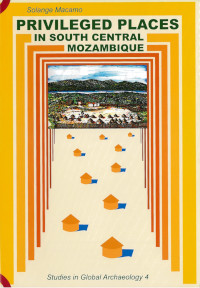Throughout the 20th century, archaeologists in southern Africa have focused upon visible architectural features of stone built Madzimbabwe settlements as indicators of prestige and power. Solange Macamo proposes a concept of “privileged place” based on a wide range of archaeological and environmental evidence, oral and documentary historical sources. This concept includes strategic location e.g. in relation to water, soils for agriculture, pasture, resource areas for mining and trade opportunities.Two sites are used to illustrate this concept. The privileged position of the 17th century site of Degue-Mufa in the Zambezi Valley is indicated by finds such as local and Indian Ocean trade goods, whereas the 18th century stone enclosure of Songo is an example of a trading post with direct contact to the hinterland. Excavated materials and documentary sources illustrate how the meaning of privileged places changed over time.


